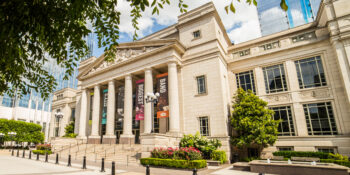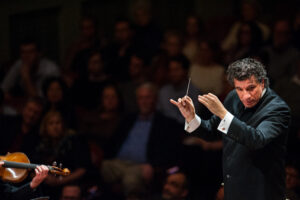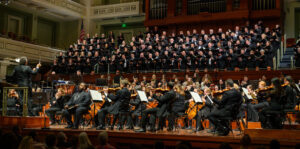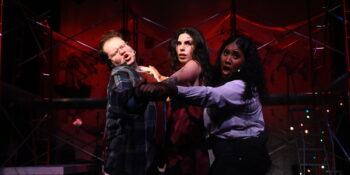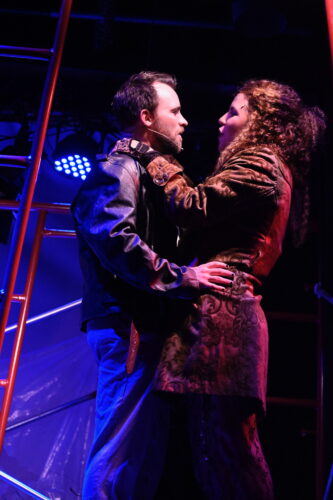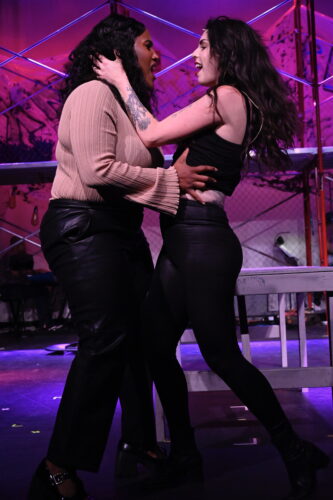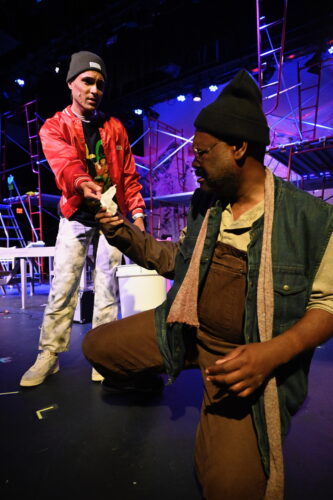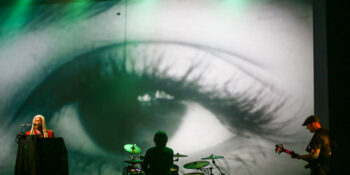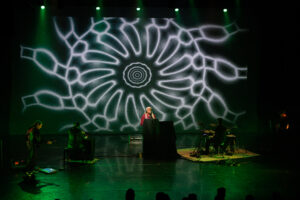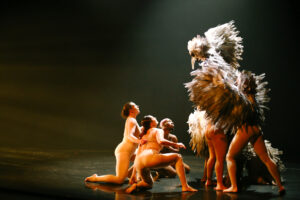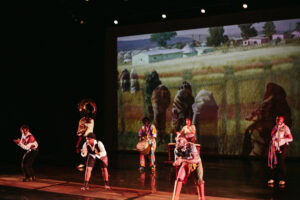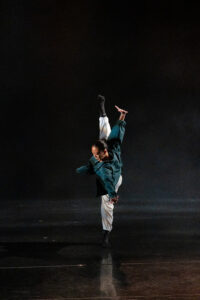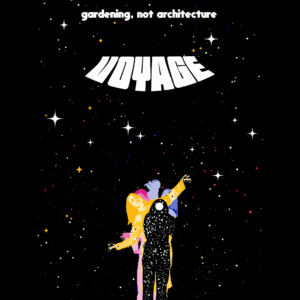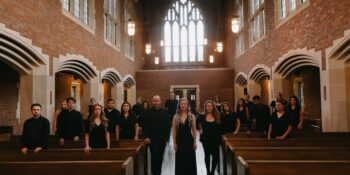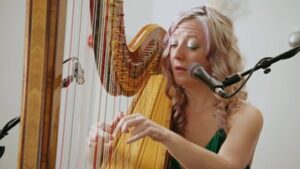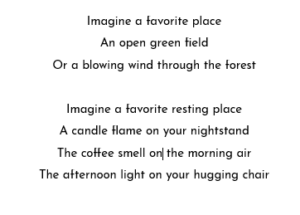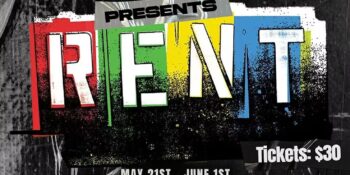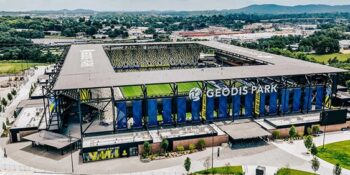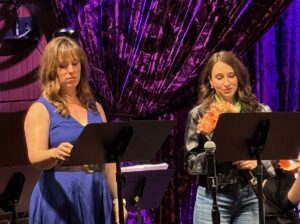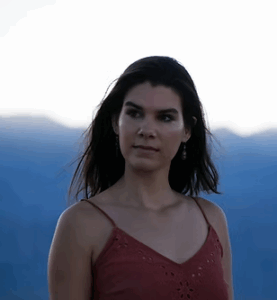A Night with the Nashville Symphony:
The Premiere of Winger’s Violin Concerto and the Music Barber and Copland

Versión en español aqui
This past weekend was an exciting time for new music in Nashville, with the Nashville Symphony’s premiere of C.F. Kip Winger’s Violin Concerto: In the Language of Flowers, during their Barber, Winger, and Copland concert. It was an entertaining performance that featured Samuel Barber’s Overture to The School for Scandal, as well as Aaron Copland’s Symphony No. 3, and concertmaster Peter Otto as violin soloist. This program was a great selection that played to music director Giancarlo Guerrero’s ability to evoke a wide range of emotions and characters from the orchestra.
The evening began with Barber’s Overture to The School for Scandal, a playful and harmonically broad work that the composer wrote at just 21 years old, as his first orchestral composition. Though composed years before his well-known Adagio for Strings, this piece is full of lyrical charm and rhythmic energy, not only representative of Barber’s style, but of Richard Brinsley Sheridan’s 1777 comedic play which inspired it. The orchestra’s strings and woodwinds bring the work’s melodic developments, like in the moments of solo oboe or accompanied clarinet, played wonderfully by principal oboist Titus Underwood and principal clarinetist Danny Goldman, respectively.
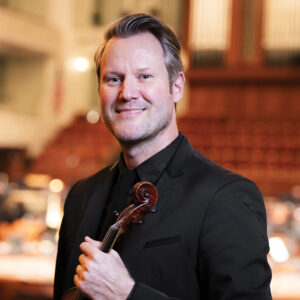
The most anticipated work on the program, the world premiere of Winger’s Violin Concerto followed, and I cannot begin to describe how anxiously I await the live recording – this piece (and its performance) was wonderful. The composer’s varied background is clearly reflected in the work. His early life was shaped by jazz and years studying dance with a ballet company, until he eventually ventured into rock with his own band, Winger, and collaborations with acts such as Alice Cooper. In 2017, the Nashville Symphony performed Winger’s ballet score Conversations with Nijinsky. Upon the positive reception of this performance, Guerrero invited Winger to write a symphony and concerto. In 2022, the Nashville Symphony premiered Winger’s Symphony No. 1, which the composer described himself as an autobiographical work “centered around the theme of atonement.” Though he began writing his violin concerto in 2019, it is not until the years following his concerto that he would complete most of the work, with the help of Peter Otto, the current concertmaster of the Nashville Symphony.
The first movement, titled “Forsythia,” opens with a violin cadenza, in which all the concerto’s four main themes are presented. Here, Otto suggests only a small sample of the virtuosic writing (and playing) that is to come with phrases of chromatic runs and arpeggios. Written in 7/8 time signature, Winger employs polyrhythm to build synergy between the soloist and orchestra. The second movement, “Viscaria,” is where the violin truly takes the front stage. In a rapid fashion, the violin often interrupts the orchestra with extravagant and rhythmically dense statements, like what one may find in a rock guitar solo. Otto takes full advantage of the writing, giving the audience no time to process the technical accuracy and prowise of his playing. This continues into the third movement, “Ambrosia.” Otto delights the audience with gentle lyrical playing of a subject which Winger himself considers his “all-time best melody.” Passionate, yet apprehensive, Shostakovich’s influence is particularly evident, here. The final movement, “Wisteria,” is the proper conclusion to a work so conflicted, full of contrast and skill. Otto’s attention to detail and care for subtly is on full display, here, and it is made clear that this piece was written with him in mind.
The program concluded with Copland’s Symphony No. 3. This was my first time listening to any of Copland’s symphonic works in-person, and it did not disappoint. The first movement opens with Copland’s signature Western sound, which he creates using widely spaced intervals and open textures of woodwinds, strings, and horns. The main theme is presented like a hymn, then quickly develops into a rhythmically driven and densely textured middle section. The orchestra has the keen ability to shift mood rapidly, making full textures appear, seemingly, out of nowhere and with ease. The second movement is a scherzo and is our first introduction to the Fanfare for the Common Man material that becomes increasingly present throughout the rest of the symphony. The dramatic nature of this movement lends itself to the orchestra’s brass sections, all capable of capturing a wide range of emotions. The trumpet section, led by principal William Leathers, especially realized Copland’s explosive and colorful writing, here. The third movement is slow and haunting. Its lyrical theme is reminiscent of the first movement, with brighter textures, though maintains a coldness throughout. The final movement immediately follows, with no pause. Here, the fanfare material from Fanfare for the Common Man reaches its peak, growing from the flutes then to the brass for an epic climax. Throughout the movement, the music breaks itself down then rebuilds, with not only a fanfare theme, but a 7/8 theme as well, clearly influenced by Latin-American rhythms. The orchestra truly shines at the climax of the movement, in the powerful return of the fanfare theme.
On the weekend of May 25th, Guerrero will conduct his final program as Music Director of the Nashville Symphony, titled “Guerrero’s Finale: Mahler’s Symphony of a Thousand.” The symphony will be performing Gustav Mahler’s colossal Symphony No. 8 (“Symphony of a Thousand”). It is sure to be an incredible experience and a fitting conclusion to Guerrero’s 16-year tenure with the Nashville Symphony.
Understanding how Nashville Operates through
The Soundwaves Gallery: “The He(art) of Nashville”
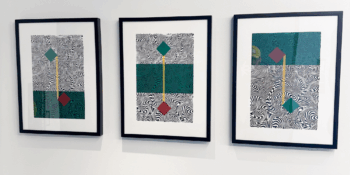
Versión en español aqui
Since 2021, The Nashville Soccer Club (Nashville SC) and the Arts & Business Council of Greater Nashville (ABC) have collaborated on different community arts initiatives, like the Soundwaves Gallery. This project has showcased the work of countless local Nashville artists in the premium club areas of GEODIS Park. On May 6th, I had the opportunity to tour the current collection titled, “The He(art) of Nashville,” with two featured artists, Omari Booker and Arash Shoushtari (artist name IMGRNT), who provided valuable context to the relevance of their works in the gallery. We were also joined by Jill McMillan Palm and Jennifer “Ennie” Brosius, the executive director and program manager of ABC, as well as Kensi Juskiewicz, the communications coordinator at the Nashville SC. Their discussion helped me to understand the significance of the collaboration of the Nashville SC, GEODIS Park, and ABC as an important point-of-reference for the interaction of art and identity in Nashville.
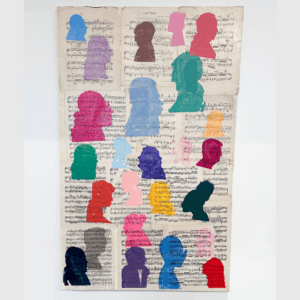
The gallery consists of 44 works from 44 local artists across several different mediums like oil on canvas, fabric on wood board, and even fused glass. The works span an entire hallway, beginning with abstract works, then moving towards portraits and landscapes. One of the first works to strike me was Love Story by Jennifer Haston. A mixed-media work featuring different colored silhouettes of real people from Haston’s life over sheet music, it is a unique representation of how these different people work together to create a harmonious life experience, uplifting and supporting one another. The vibrant blues, pinks, and reds over the distressed sheet music create a distinct juxtaposition between expectation and reality. There is never any color to sheet music, only white and black, yet the combination here is fitting. The piece that these figures are printed over is titled, “Love Song,” further embracing the notion of love and peace as a shared effort.
Works like Nightlights by Rhiannon Guppy and Petrichor by Will Maddoxx follow, using bright colors to develop the idea of Nashville’s community and nightlife as both a blur, but also something controlled and focused. Max by Carrie DePauw and Glass Kite by Lauren B. are works that use color to represent the individuality and warmth that makes up the Nashville community. These two artists, as well as Jennifer Haston, are part of the Friends Life Community (FLC), which is a Nashville organization that “provides opportunities for individuals with developmental disabilities to grow, develop, and be active members of the community.” The gallery features many artists from different cultures with different backgrounds and different stories – this is an extremely important idea of this project. Our differences should be what bring us together and deserve to be represented. These identities are Nashville. There could not have been better representatives of this idea than the two artists I had the chance to speak with, Booker and IMGRNT.
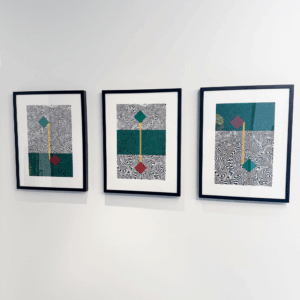
BWGRS is a triptych from a larger 7-panel work that draws inspiration from Persian textile patterns to create a mesmerizing visual and provide an outline for a deeper element of storytelling. In this piece, IMGRNT tells the story of his two uncles, represented by red and green diamond shapes, connected by a vertical gold line. Their story is a deeper reflection of the artist’s Iranian roots, as well as the immigrant experience, two themes that are present through the artist’s visual and performative works. It was interesting to me how well the three panels worked together, though taken from a larger work – IMGRNT explained how the triptych was always present in the work. This adaptability is an important component of his art and helps expand upon the artist’s interest in immigrant communities as growing in significance to Nashville’s identity. As previously mentioned, IMGRNT also does performance art, as a more direct and explicit form of representation for immigrants and the immigrant experience – his War & Beat (in A natural Minor) was discussed in a previous Music City Review article that covered the Kindling Arts Festival in 2024.
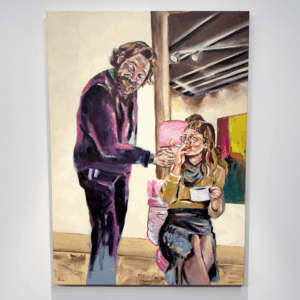
Alex and Ash is the featured work of Omari Booker, a multidisciplinary artist based in Nashville, TN and Los Angeles, CA. In this work, Booker paints the scene of Alex Lockwood and Ash Atterberry, two prominent members of the North Nashville art community, from a recent meeting at Elephant Gallery. a Nashville art gallery that Alex opened around 2016. Though a very real image, this painting is dreamlike – the blue highlights around Alex’s eyes and throughout the piece and its color spread are standout elements that add to the work’s lively nature. Booker described how his art is heavily influenced by his “surroundings, family, and friends,” and a deeper story revealed itself. For these galleries, artists can submit up to 5 pieces. Many submit preexisting works, while others create specifically for the theme of the gallery. Alex and Ash was the only work that Booker submitted, but perfectly encapsulated the idea of Nashville art, not only being diverse, but also self-sustaining and connected. Booker discussed how he felt Alex and Ash are important artistic role models for not only himself, but Nashville as a whole, as their focus on art from local and regional artists as a reflection of Nashville’s true creative identity is an important distinction, especially in a time and place where gentrification has had a significant impact on the arts and black communities.
The Soundwaves Gallery is displayed for the entire season of the Nashville SC, starting in February, and is shown on various stadium tours throughout the year. Its inclusion at GEODIS Park captures the point of the stadium being a place of unity for all of Nashville, bringing people from all walks of life together to enjoy their shared interest in soccer. ABC and the Nashville SC are working together on newer projects, such as the recently announced Starting XI. This is an exciting endeavor that commissions 11 local artists to create soccer-related artistry from recycled soccer items. The first of these works is an upcycled pair of soccer cleats, now on display at the Soundwaves Gallery. Throughout the season, these items will be displayed one at a time, and aim to highlight the interaction of sustainability and art. Be sure to keep up with Booker and IMGRNT, as well as ABC and the Nashville SC. All are working to keep local art alive and to better represent us, the diverse population of Nashville.

